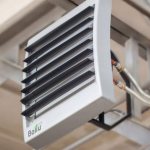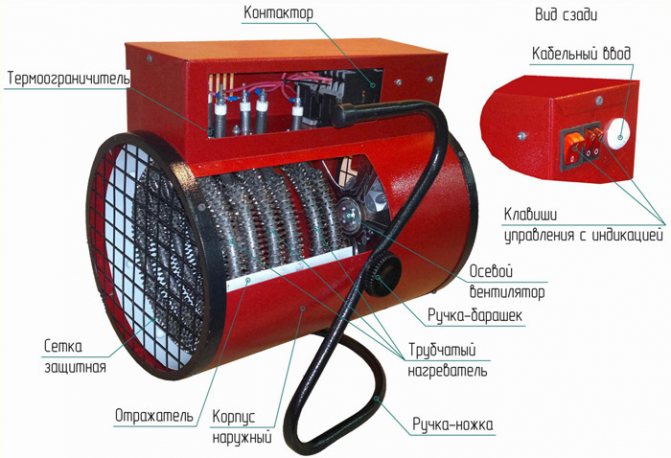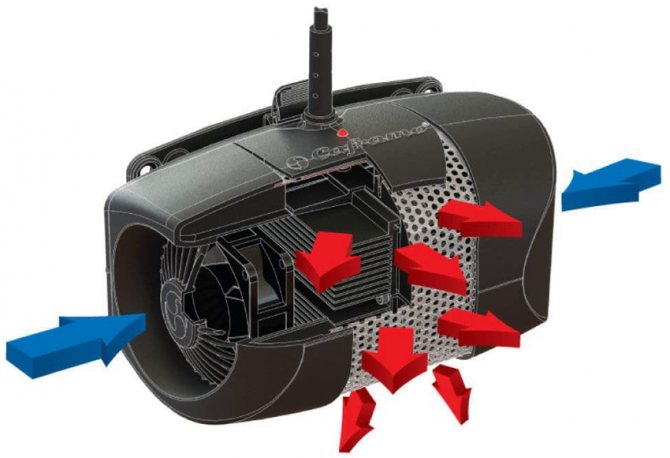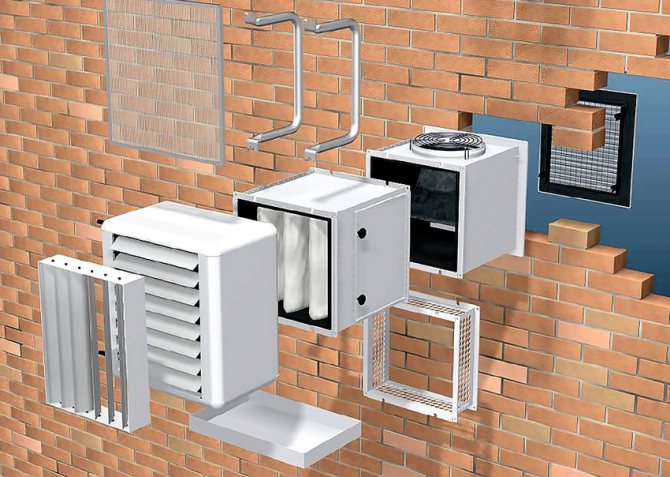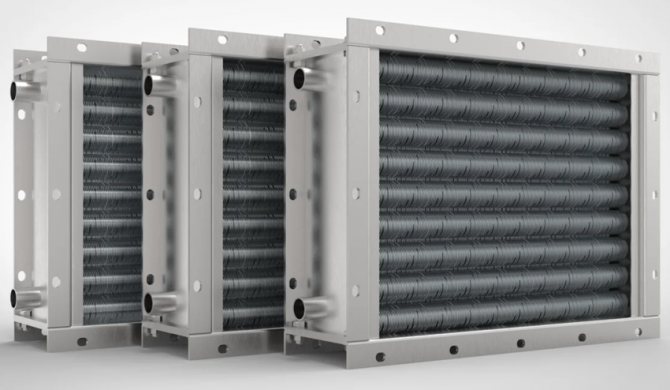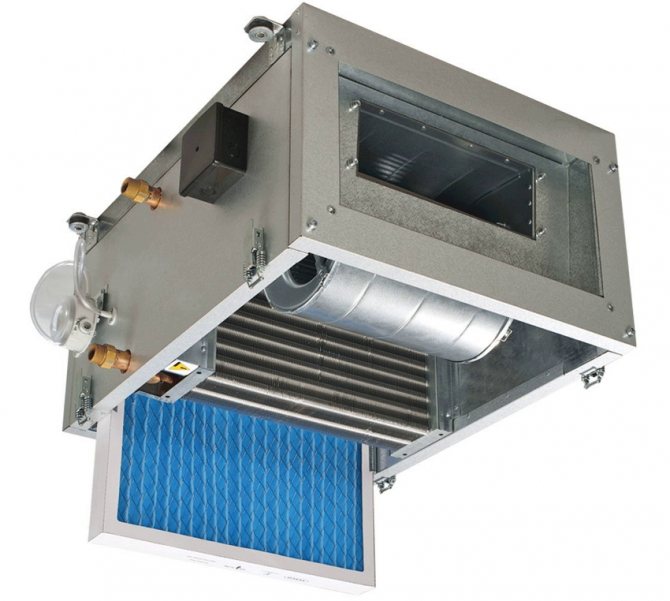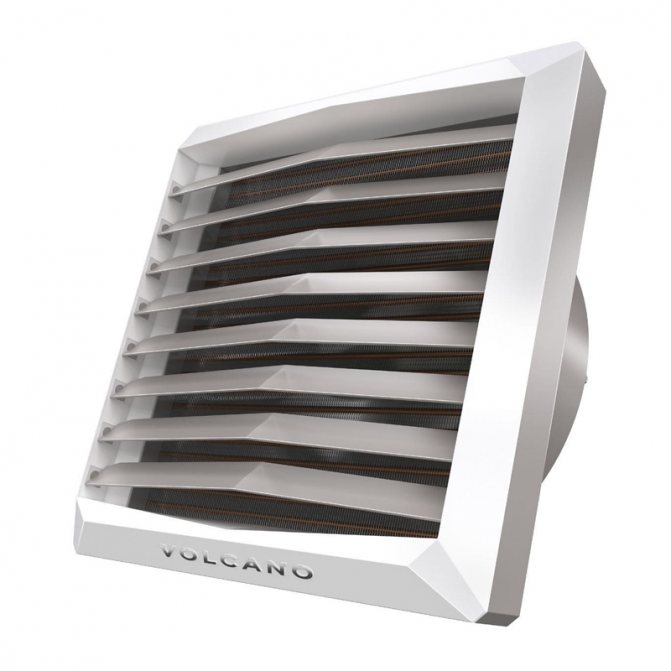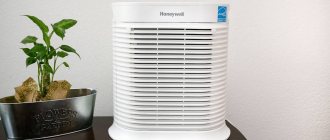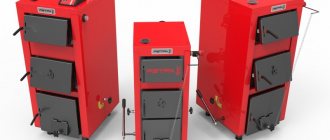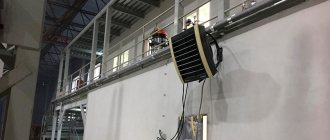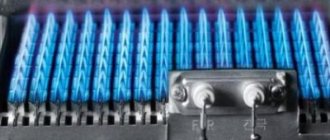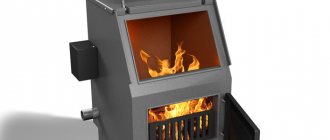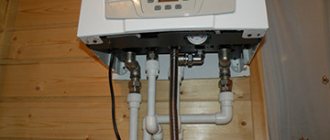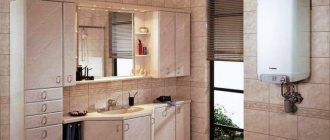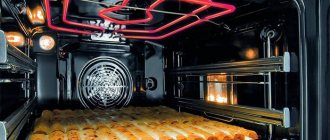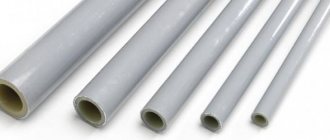A source
SHARE ON SOCIAL MEDIA
Such a concept as an electric heater has several meanings. First of all, it depends on the purpose of the device. It is used for heating air in heating systems, ventilation and air conditioning. In this case, different substances are used as a heating element. About what kind of heaters are, it will be discussed in this article.
Heaters are used to heat indoor air
The principle of operation and design of a water heater
A heater is a device used to heat air. According to the principle of operation, it is a heat exchanger that transfers energy from the coolant to the flow of the supply jet. It consists of a frame, inside which tubes are located in dense rows, connected in one or several lines. A coolant circulates through them - hot water or steam. The air, passing through the cross-section of the frame, receives thermal energy from the hot pipes, due to which it is transported through the ventilation system already heated, which does not create the possibility of condensation or cooling the premises.
Types of heating devices for supply ventilation
All air heaters for supply ventilation can be divided into two main groups:
- Using a coolant.
- Not using a heating medium.
The first group includes water and steam heaters, the second - electric. The fundamental difference between them is that the devices of the first group only organize the transfer of heat energy supplied to them in a finished form, while the devices of the second troupe create heat inside themselves on their own. In addition, water and steam heaters are subdivided into plate heaters, which have greater efficiency, but the worst performance, and spiral-rolled, which are now used almost everywhere.
There are also heating devices, often referred to these groups, for example, a gas heater. The burning gas heats up the air stream passing through the glow zone, preparing it for use in ventilation or air heating systems. The use of such devices is not widespread, since the use of gas in industrial workshops is associated with a lot of dangers and has many restrictions.
There are also waste oil heaters. The heat generated during the burning of the waste is used. For large rooms, such devices do not have enough power, but for small auxiliary areas they are quite suitable.
Supply ventilation with heated air: everything you need to know.
We install plastic air ducts for ventilation: advantages and disadvantages.
Ventilation in the bathroom and toilet: selection and installation of an exhaust fan.
Pros and cons of using
The advantages include:
- High efficiency.
- Simplicity of the device, reliability.
- Compactness, possibility of placement in small volumes.
- Low maintenance (water and steam appliances practically do not need it).
The disadvantages include:
- The need for a coolant or connection to the power supply network.
- Independence of work - equipment for air supply is required.
- An interruption in the supply of electricity or heat carrier means a shutdown of the system.
Both the advantages and disadvantages of the devices are due to the design and do not depend on external factors.
Construction and elements
The air supply unit with a water heater by its design can be either a monoblock unit (the so-called compact supply units with a water heater, when all the elements are in a single housing), or a type-setting or sectional type (each component has its own housing and these housings are sequentially interconnected by means of fasteners).
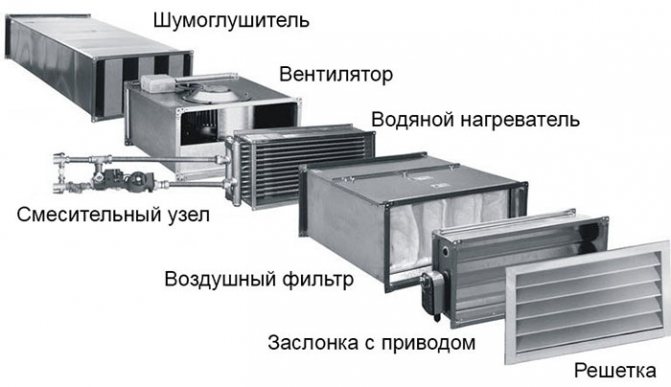
The casing of the air handling unit with a water heater can be either simple, that is, it does not have heat and sound insulation, or it can be thermally insulated and sound insulated.
The fan impeller can have a V-belt drive (recently it has been used less and less), or a direct fit on the motor axis.
The supply unit with water heating may contain some of their elements, each of which plays its own role:
- fan - a device that moves the air flow, that is, delivers it from the street to the serviced premises.
- Heater - serves to heat the external air flow using hot water (water supply unit).
- Cooler - used to cool the fresh air flow using freon or water.
- Air filter - serves to clean the fresh outside air from dust particles, odors and even microbes.
- Silencer - needed to reduce the noise that inevitably appears during the operation of the air handling unit.
- Servo-assisted air valve - needed to shut off the air flow to the ventilation machine.
- Humidifier - needed to increase the humidity in the room.
- Bactericidal section - used to decontaminate the supply air from microbes (see the catalog).
- Automation system - serves to automatically maintain user-specified parameters (this is a control unit or control cabinet, a control panel, sensors, relays, drives, speed controllers, a mixing unit, etc.)
Types of heaters
There are several types of heaters used in different locations and conditions.
Let's take a closer look at them:
Aquatic
The most common group of devices, characterized by high efficiency, safety and ease of operation. They use hot water as a heat carrier, coming from the central heating network, hot water supply or from their own boiler. A water heater for supply ventilation is the most convenient and economical solution that allows you to perform the assigned tasks with minimal maintenance or repair costs. The only drawback of the device is the need to connect to the coolant supply system, which creates certain difficulties at the installation stage and prevents rapid transfer to another place.
Steam
Steam devices are complete analogues of water ones and in practice differ from them only in the type of coolant. The only difference between steam appliances is the large wall thickness of the tubes - 2 mm versus 1.5 for water ones. This is due to the high pressure in the system, requiring reinforced channels for circulation. The rest of the devices are identical, have the same operating rules and requirements.
Electrical
An electric air heater for supply ventilation does not need a heating medium supply, since the heating source is an electric current. Connecting such devices is much easier, which makes them mobile and easy to use, but high energy costs limit the use of this group. Most often they are installed for local heating when performing one-time work, they are used as emergency or temporary heat sources.
Household electric heater: features and types
There are special autonomous heating electric heaters for the home.Such devices are used mainly as a source of temporary heat during periods when there are interruptions in centralized heating, or in conditions of early or prolonged cold weather. Modern manufacturers offer a wide range of different heaters.
Related article:
Heating manifolds: guaranteeing efficient operation of the heating system
Features of the technological unit. Principle of operation. Varieties of construction. Manufacturing material. Selecting a manifold header. Manufacturers.
To choose the right option, it is necessary to take into account a number of features, in particular, pay attention to the power of the heating element, compared to the area of the heated room. You should pay attention to the functionality of the heater and how quickly and efficiently it heats up the room. Saving energy is also a very important issue in the process of choosing a heater.
The modern market for heaters offers the following types of electric household heaters:
- oil radiator;
- electric convector;
- thermal fan;
- infrared heater.
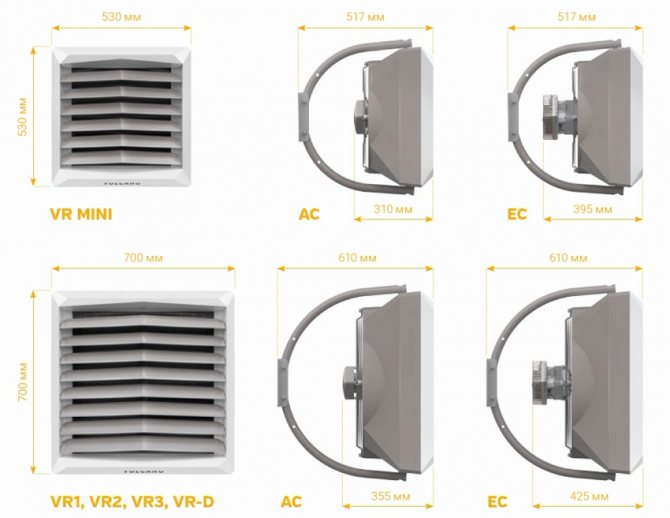

Dimensions of different fan heaters from Volcano
When giving preference to one or another type of air heater for domestic needs, the expected operating conditions should be taken into account. The power of the heating element plays an important role. This concept means the amount of heat energy that is produced over a certain period of time.
For standard apartments, where the ceiling height does not exceed 2.5 m, the heater is selected based on the following conditions: 1 kW of power is required for 10 square meters. If the heater serves as an additional source of heat, then a device with a power of 1-1.5 kW is enough for a room of 25 squares. In an unheated room, the device is chosen based on the requirements: 1 kW per 25 square meters.
Oil heater: advantages and functioning features
The safest in the list of electric air heaters for the home is an oil heater. Outwardly, this is a radiator familiar to the eye, but it is made in such a way that it is impossible to get burned when touched. The main difference from other types of heaters lies in the coolant - oil is used as it, which expands when heated, filling all the containers. An ordinary heating element serves as an element for heating in such a device.
The positive qualities of this equipment are that one such unit is quite enough to heat one room with an average area. It may be enough even in an unheated room, provided that the outside temperature is not frosty. The installed thermostat on modern air heaters allows you to control the temperature regime of the heater - it is triggered when the desired indicator is reached and, upon its signal, the heater is turned off.
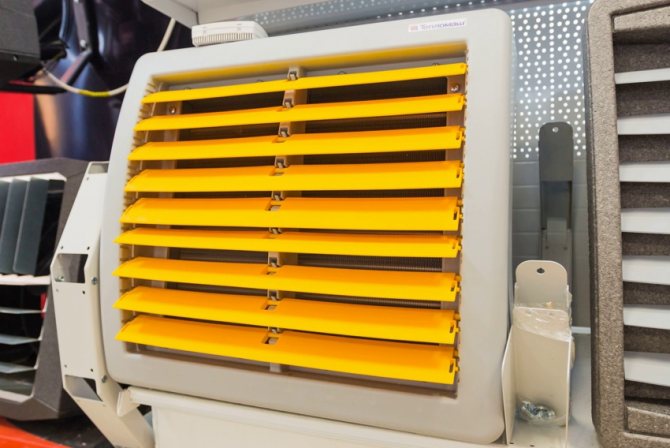

The body of the oil heater does not heat up, which ensures its safety
Helpful advice! Heating equipment should be purchased in specialized stores that have all the necessary documents and permits for the sale of electrical appliances.
By equipping the device with a timer, it can operate continuously for several days without requiring any special control. This advantage allows the oil heater to be left on for a short time. The only drawback of such equipment is its inertness, since it takes some time for a coolant in the form of oil to heat it up to the desired temperature index.
Oil radiators have their own subspecies:
- electric wall heater;
- floor mobile heater;
- oil heater with electronic control;
- radiator with mechanical control.
Waste oil heater and gas heater: garage options
In heating garages, homemade units that run on waste oil are often used. Such a device provides double savings - it serves as a waste oil disposer, and also does not require the purchase of expensive heating equipment.
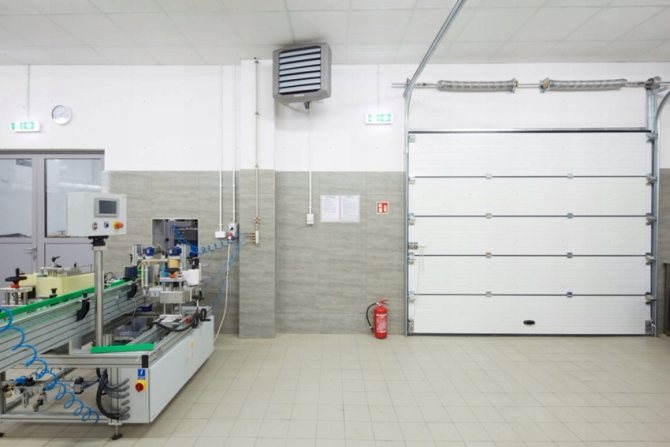

Air heater - a common option for heating a garage
With the help of such a heater, you can heat rooms with an area of over 300 cubic meters, provided that the owner also took care of insulation. If the insulation is weak, then the normal temperature for life can be maintained in a room with a volume of up to 200 cubic meters. At the same time, the consumption of consumed oil is equal to 300 ml per hour.
The heater can be additionally equipped with automation and special temperature sensors - to determine the presence of a flame and a temperature indicator. It is imperative to have an oil pump in the design, as well as fans for pressurizing and blowing off the heat exchanger. The heater fans themselves are also equipped with automation. This is a simple thermal relay that is triggered when the device warms up and when it cools down. The oil pump, operating in automatic mode, drops the used oil into the perolysis cup. The desired oil level and rate can be selected.
For heating technical premises, gas heaters are also used, belonging to low-power heating devices that run on liquefied gas. The fuel can be propane-butane or pure propane. Such equipment has an advantageous combination of small size and power, so the unit can be easily moved and used in a limited area.
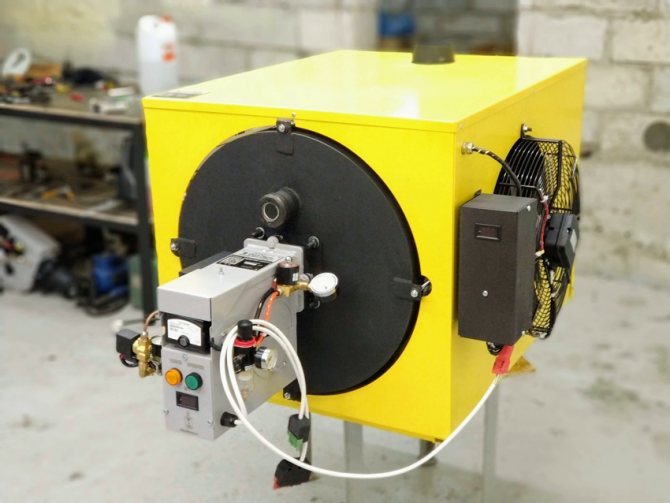

Electric air heater with fan
Fan heater: small-sized air heater for home and summer cottages
For premises that are used as temporary housing, for example, for summer cottages, it is best to choose a small and inexpensive heating option, which is a household fan heater. By design, this is an ordinary incandescent spiral made of metal or ceramics, arranged in a plastic case. A fan is installed directly behind the spiral, directing the flow of cold air to the heating element. Thus, the device blows already heated air around the room. This device is a prototype of an industrial fan heater.
Helpful advice! In order not to be mistaken in choosing a household air heater, it is enough to look at the device's passport. The document indicates the power of the device in terms of thermal energy performance. Here you should be guided by the standard for calculating the air heater: 1 kW per 10 square meters of area.
The fan heater is capable of heating an entire room in a short period of time. Its compactness allows for placement anywhere, directing a warm stream wherever you need it. Such a heater is notable for its affordable price and low energy consumption. Most of the models are equipped with special power regulators that regulate the intensity of the ventilation device.
Modern models are also equipped with a remote control system. In addition, in the summertime, the device can be used as a regular fan. To do this, simply turn off the heating element. The main disadvantage of such heaters is its short-term operation; moreover, immediately after switching off, the temperature in the room drops sharply.
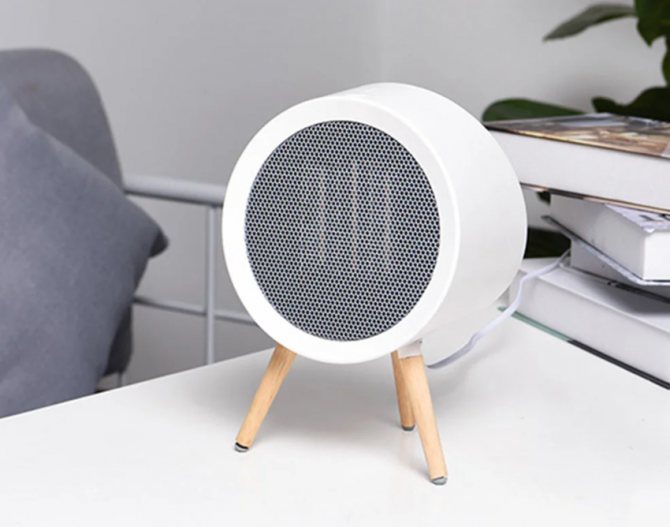

Desktop heater for use in small spaces
Calculation of the power of the heater
Calorifier calculation produced in several stages. Sequentially determined:
- Thermal power.
- Determination of the size of the frontal section, selection of the finished device.
- Calculation of media consumption.
Since the air flow is known from the characteristics of the ventilation system, it does not need to be calculated. The formula for determining the thermal power of the device:
Qt = L • Pw • Cw • (tvn - tout)
Where Qt - heat output of the heater.
L - air consumption (value of the supply flow).
Pv - air density, tabular value, is in SNiP.
Cv - specific heat capacity of air, available in the SNiP tables.
(tвн - tнр) - the difference between internal and external temperatures.
The internal temperature is a sanitary standard for a given room, the outside temperature is determined by the average value of the coldest five-day period of the year for a given region.
Determine the frontal section:
F = (L • P) / V,
Where F - frontal section.
L - air consumption.
P - air density.
V - mass flow rate, taken about 3-5 kg / m2 • s.
Then we find the flow rate of the coolant:
G = (3.6 • Qt) / Cv • (tin - tout),
Where G - coolant consumption.
3,6 - correction factor for obtaining the required units of measurement.
Qt - thermal power of the device.
Cv - specific heat capacity of the medium.
(tin - tout) - the difference between the temperatures of the coolant at the inlet and outlet of the device.
Knowing the flow rate of the carrier, you can determine the diameter of the piping pipes and select the necessary equipment.
Calculation example
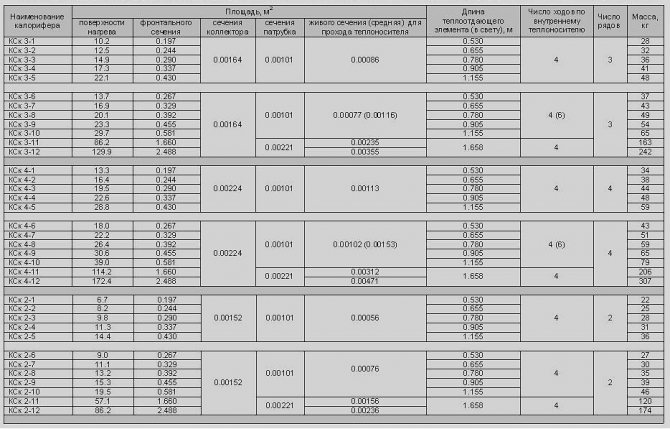

Determine the heat output at a temperature difference from -25 ° to + 23 °, with a fan capacity of 17000 m3 / h:
Qt = L • Pw • Cw • (tvn - tout) = 17000 • 1.3 • 1009 • (23 - (- 25)) = 297319 W = 297.3 kW
Frontal section:
F = (L • P) / V = (17000 * 1.3) / 4 = 5525 = 0.55 m2.
Determine the flow rate of the coolant:
G = (3.6 • Qt) / Cv • (tin - tout) = (3.6 • 297.3) / 1009 • (95-50) = 1.58 kg / sec.
Based on the data obtained from the heaters table, we select the most suitable model.
Calculation of the heating surface
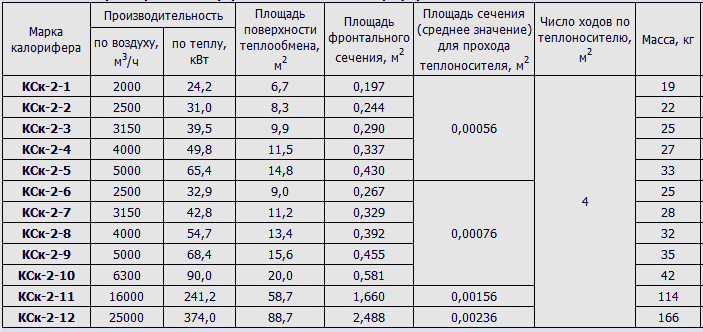

The heating surface area determines the efficiency of the device. The larger it is, the higher the heat transfer coefficient, the more the device heats up the air flow. Determined by the formula:
Fk = Q / k • (tav.t - tav.w)
Where Q - thermal power.
k - coefficient.
tav.t - the average temperature of the coolant (between the values at the inlet and outlet from the device).
tav.in - average air temperature (outside and inside).
The obtained data are compared with the passport characteristics of the selected device. Ideally, the discrepancy between the real and calculated values should be 10-20% more than the real ones.
Features of calculating steam heaters
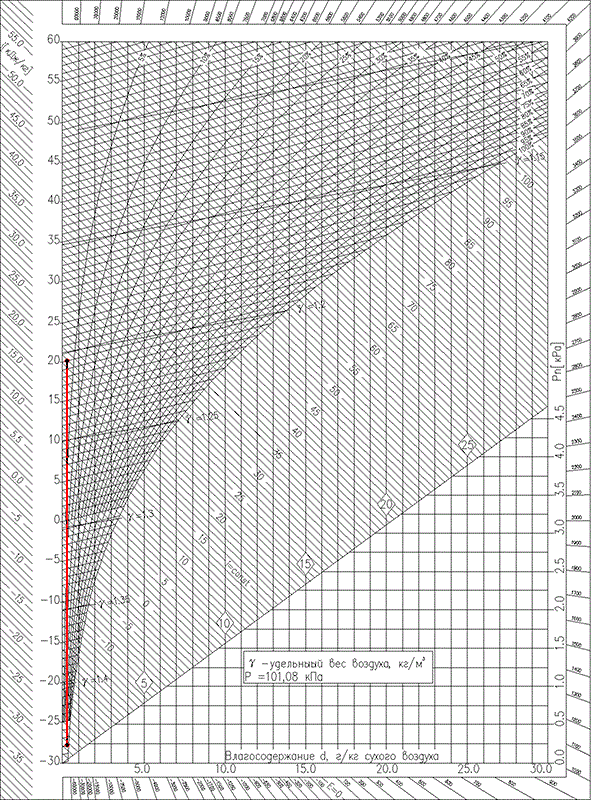

The method for calculating steam heaters is almost identical to the one considered. The only difference is the formula for calculating the coolant:
G = Q / r
Where r - specific heat arising from steam condensation.
Self-calculation of heating installations is quite complicated and fraught with the appearance of many errors. If you need to calculate the device, the best solution would be to contact a specialist or use an online calculator, of which there are many on the Internet. The solution is quite simple, you just need to substitute your own data in the program windows and get the desired values, on the basis of which you can select ready-made devices.
Maintenance and repair of the ventilation air heater
Like any device, the air heater requires careful attitude and certain care. If you do not follow the operating rules, then cracks may appear on the pipes transporting the coolant, which entails leakage and, as a result, loss of heat. If a low-quality heating medium is used, the heat exchanger pipes may become dirty.
If all working conditions are observed, then unwanted breakdowns can be avoided. Then the main reason for preventive maintenance will be cleaning the ventilation system from scale and other deposits. Such manipulations must be performed regularly, since such obstacles reduce the thermal conductivity of the unit, and the cost of its operation, on the contrary, increases. Cleaning consists in a routine flushing using special agents containing reagents that kill bacteria that have settled in the system.
If the heat exchanger was nevertheless damaged, then it is necessary to seek help from specialists who will carry out professional repair of the equipment. The workers will find the leak, solder the pipes and, if necessary, replace the plates and seals.
It should be noted that untimely cleaning of the ventilation system creates a fire hazard, the cause of which is the accumulation of dust and dirt in the ducts.
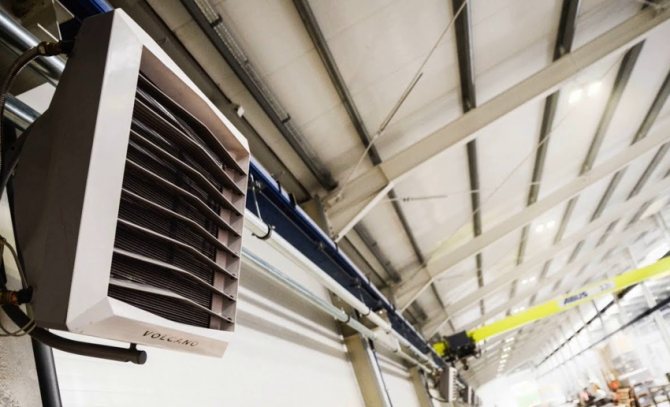

For proper operation of the air heater, it must be cleaned regularly.
Heaters are rightly considered one of the most popular heating equipment devices. When choosing a heater or an air exchanger, a number of parameters should be taken into account, in particular, the type of heat exchanger, device power, pressure, temperature indicators inside the coolant, as well as at the inlet and outlet. The area of the room to be heated should also be taken into account.
Share the news on social networks
- Similar posts
- Wall in the bedroom: how to choose a beautiful and functional piece of furniture
- Photo wallpaper for walls: original and boring interior
- Fast-growing climbing plants for a fence: a picturesque decoration of the site
«Previous post
Strapping methods
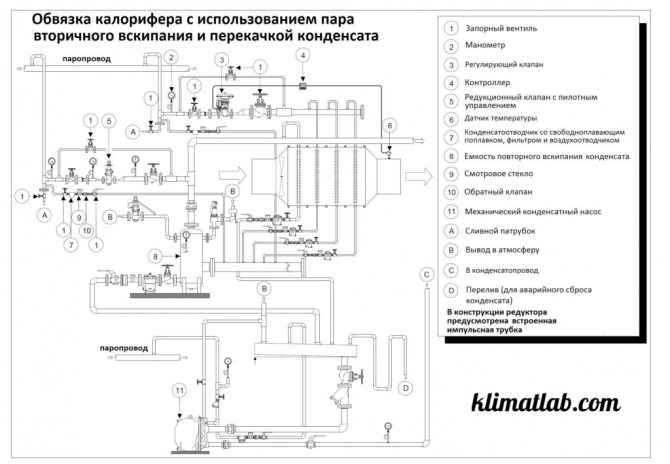

Heater piping is a set of devices and elements for regulating the supply of coolant to the device. It includes the following elements:
- Pump.
- Two- or three-way valve.
- Measuring instruments.
- Shut-off valves.
- Filter.
- Bypass.
Depending on the operating conditions, these elements can be located in the immediate vicinity of the device, or at a decent distance from it. Based on the connection conditions, they are distinguished:
- Flexible strapping. It is mounted on control units located next to the device. The installation of such straps is considered easier, since it makes it possible to carry out all work on threaded connections, practically without the need for welding.
- Rigid strapping. It is used on devices remote from control units and requiring strong communications.
With a difference in the installation technique, both types perform the same function - they provide setting and adjustment of the heater's operating mode.
How to choose a heater
First, the device must be able to regulate the operating modes by an external electrical signal from standard equipment. For example, a thermostat. The considered device is a conventional fan heater used as an air heater. The unit only listens to the remote control and buttons. This is equipment for a room, which, for example, can be mounted at the outlet of a ventilation duct. We believe that it is allowed to install such a device inside the path. From the passport operating conditions it is clear that there will be no violations.
Water heaters KSk, KPSk seem to be more unpretentious and simple devices. There is no description on the dealer's website, except for the material of the radiator, made of aluminum, as well as purely technical characteristics. It is not even clear whether a fan is installed inside the device. We will not advertise the disgustingly described product.
The devices are reviewed in detail on the website kalorifer.net, from which it becomes clear that devices for 5000 rubles are an ordinary coil, there is no electronics inside. This is easy to install, but the device will reduce the recuperator's performance in terms of air flow, which will require making adjustments or installing an additional fan. In this case, the proposed approach with KEV-25T3W2 does not look too primitive, eliminating the emerging difficulties. And the engine speed can be changed from the outside. Also ask the manufacturer.
We told you what a heater is, mentioned a couple of designs, simple and complex. The produced varieties became known to the readers. For the case described in the article, a device controlled by a thermostat through a device for controlling the speed of an asynchronous motor is required. Hopefully we've shown you what to look for when buying a heater.
Of course, the device can also be used separately.Or equip rooms where heating is especially required, this will drastically reduce costs and increase the efficiency of the system.
Adjusting the heating process
There are two ways to adjust the operating mode:
- Quantitative. The adjustment is made by changing the volume of the coolant entering the device. With this method, there are sharp jumps in temperature, instability of the regime, therefore, the second type has been more common recently.
- Qualitative. This method allows you to ensure a constant flow rate of the coolant, which makes the operation of the device more stable and smooth. At a constant flow rate, only the temperature of the carrier changes. This is done by mixing some of the colder return flow into the direct flow, which is controlled by a three-way valve. Such a system protects the structure from freezing.
Arrangement of ventilation in a private house with your own hands: choosing a scheme and drawing up a project.
Combined boilers for wood and electricity: the best solution for heating a country house. A source:
Air heater selection criteria
A weighty argument for choosing a water heater with a fan has already been named: the possibility of uninterrupted operation from the water temperature set in the house. Not everyone wants to separately install a steam boiler specifically for a water heater with a fan; it is understandable that they want to use a 60 ºС heating branch. However, the power of the output stream drops dramatically in this case. Therefore, it is necessary to estimate in advance whether the recuperator in the branch will raise the temperature up to 15 ºС. If the answer is yes, no difficulties are foreseen. 22 ºС - even more than doctors advise to maintain indoors.
In this case, a liter of water is consumed in 25 seconds. Not excessive load on the heating circuit. Difficulties will begin in the summer, when a water heater with a fan becomes an unnecessary load. The recuperator can switch to summer mode, in which air passes directly to the outlet, bypassing the membrane, but we do not know if the device in question is capable of doing the same. They tend to think, cannot. For the summer, it is better to dismantle the unit.
Features of installation and connection
Installation work, connection, launching the system, setting up work - all this should be done by a team of specialists. Do-it-yourself installation of a heater is possible only in private houses, where there is no such high responsibility as in industrial premises. The main operations include installing the device and control elements, connecting them in the required order, connecting to the coolant supply and removal system, pressure testing, and test run. If all the units of the complex demonstrate high-quality work, then the system is put into permanent operation.
Features of the device and principle of operation
A standard air heater, regardless of the method of heat transfer, necessarily consists of two elements:
- heat exchanger;
- fan.
The principle of operation of any air heater is based on the fact that the coolant is characterized by greater heat transfer than the surrounding air flows. Accordingly, passing along the air heater housing, the air masses forced by the fan blades are able to be heated or cooled.
To increase the efficiency of the device, the effective area of the heat exchanger is increased. This is achieved by welding additional metal fins to the pipes.
Operating rules and the possibility of repair
The main requirements for the operation and safety of the device are set out in the passport. They are aimed at eliminating emergencies caused by exceeding the permissible temperature or pressure of the coolant, to avoid a sharp increase in the temperature of the complex during the first start-up in the cold season. Particular attention should be paid to the danger of freezing of the tubes of the device in winter, threatening the failure of the device.For the repair of devices, specialized organizations should be involved, independent intervention most often only increases the degree of the problem.
Specificity of using water heaters for heating
Fan heaters of water type are used for heating premises with a large area - shops or offices. They allow you to quickly dry carpets or car seats, so they can be used in car washes and dry cleaners.
Water heat sources are justified for basements with high humidity levels. They can be installed in garages, construction cars, workshops, on the territory of warehouses or workshops for the production of polymers.
Duct water air heaters are suitable for maintaining a comfortable temperature in the home and at work. Energy-saving equipment practically does not consume electricity and gas, which allows you to save on utility bills.
